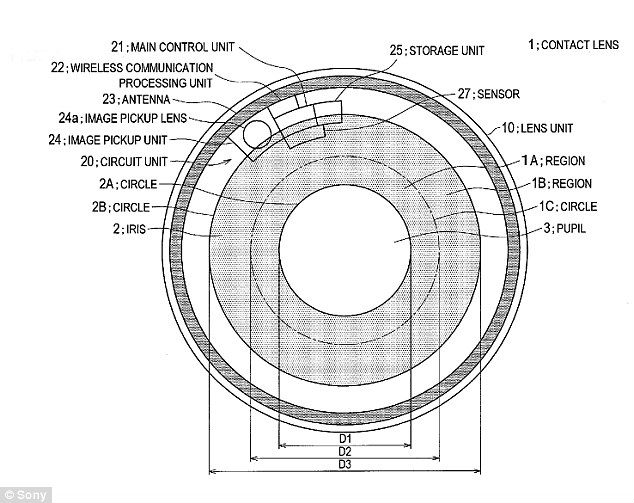
Sony files patent for new contact lenses that can record and play video at the blink of an eye; you can switch it off and on by closing your eyes.
Following the lead of tech giants, Google and Samsung, Sony has now filed a patent for smart contact lens with extraordinary technological features. This smart contact lens will allow you to record and play back video. The Japanese tech giants describe the idea as “a contact lens and storage medium capable of controlling an image pickup unit provided in the contact lens.”
Two years ago, Google uncovered a lens project that detects someone’s blood sugar levels, designed to help diabetes patients. Similarly, three weeks ago, Samsung filed a patent application at the Korean Patent office for a contact lens with a tiny camera that can be controlled with the blink of the eyes.
Showing similar interest in wearable technology, Sony also filed a new patent with the U.S. Patent and Trademark Office for smart contact lenses with camera-like features.

According to the patent, the high-tech lens will have a camera that can zoom, focus, stabilize images, and adjust its aperture. The photos are automatically sent to a phone or other device or can be displayed in front of the wearer’s eyes, no other screen needed. The way they are taken is very simple: A sensor on the lens identifies pressure from the eyelid and snaps the photo right before or after your blink. The contact lenses can take photos and record videos as well as play back the captured footages for the user.
The patent, which has not yet been approved, would use sensors to detect when a user closes an eyelid. Depending on how long the eyelid remains closed, the lenses could distinguish voluntary movements from accidental blinking.
“It is known that a time period of usual blinking is usually 0.2 seconds to 0.4 seconds, and therefore it can be said that, in the case where the time period of blinking exceeds 0.5 seconds, the blinking is conscious blinking,” the patent application reads.
By closing their eyelids on purpose, users could switch the camera mode on and off. The contact lenses will also include a storage medium where the videos and photos can be stored without the need of an external storage device. This internal storage mechanism is what makes Sony’s patent different from that of Samsung.
Samsung’s contact lenses require that the captured images be sent to another device, such as a smartphone. Such process that involves storage of captured images on an external device makes it less desirable than Sony’s patent that comes with internal storage capabilities.
Similarly, Sony’s patent explains a display showing additional controls that can be activated by a “tilt sensor.” The contacts could also correct blurry images, manage auto focus, zooming and aperture controls.
“The contact lens according to each embodiment of the present disclosure has an image pickup function and performs predetermined image pickup control in accordance with blinking or the like of a user,” Sony’s patent application reads. “This makes it possible to make an intelligent contact lens, thereby remarkably improving usability.”